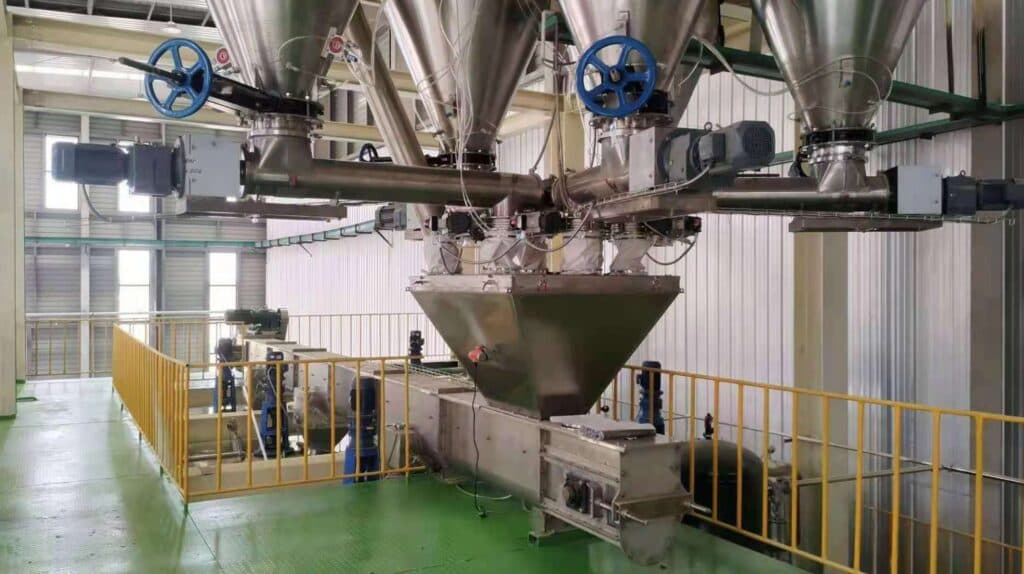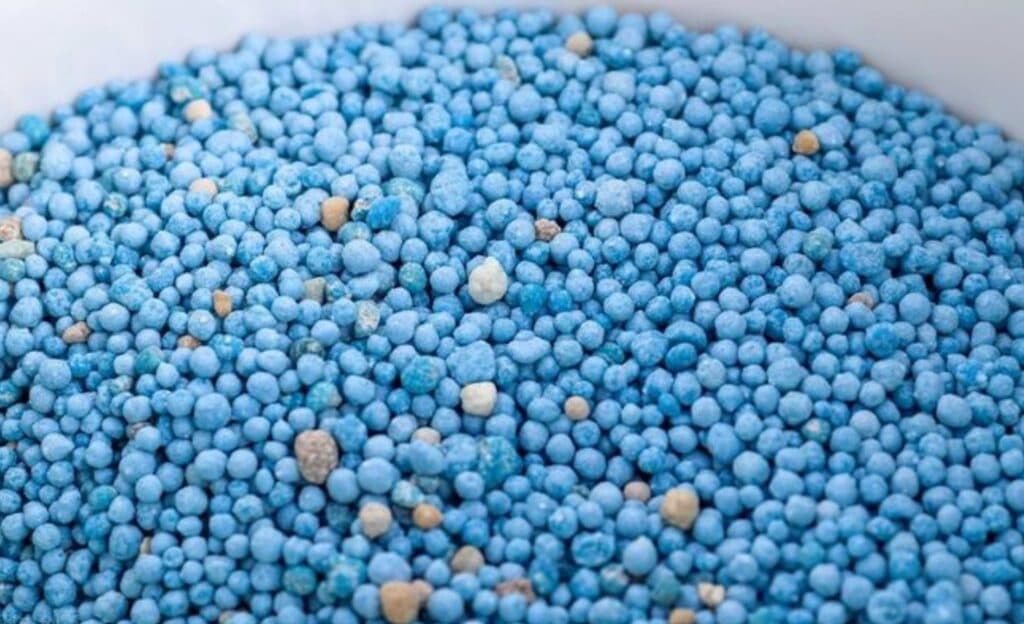What is single super phosphate SSP fertilizer?

Single superphosphate is a widely used phosphate fertilizer made by chemically reacting phosphate rock with sulfuric acid. This fertilizer contains about 12% to 14% phosphorus and is also rich in calcium and sulfur. Single super phosphate appears in the form of white or off-white powder. It is a physiologically acidic fertilizer that can simultaneously provide the three elements of phosphorus, calcium and sulfur required for the growth and development of crops.
What are the functions of single super phosphate(SSP)?
Phosphorus is an important component of plant cell nucleic acids and cell membranes, and plays a vital role in plant growth and development. Calcium is an important component of plant cell walls and cell membranes, helping to improve plants’ disease resistance and ability to adapt to environmental changes. Superphosphate can promote the development of plant root systems, improve the plant’s ability to absorb water and nutrients, promote flower bud differentiation, increase the number of flowers, and improve the plant’s stress resistance.
What are the precautions for using single super phosphate fertilizer?
When using single super phosphate, you need to pay attention to the appropriate amount of fertilizer to avoid acidification of the soil. Do not mix it with alkaline fertilizer to avoid reducing fertilizer efficiency. Also, pay attention to the timing and method of fertilization to ensure that the fertilizer can be effectively absorbed by plants. Superphosphate is suitable for use as a base fertilizer, especially when applied before crop planting or sowing.
What is the production process of single super phosphate?

- Crushing and grinding of phosphate rock: After crushing the phosphate rock to a certain particle size, grind it to increase the surface area of the phosphate rock and facilitate subsequent reactions.
Acidolysis reaction: Mix the ground phosphate rock and sulfuric acid in a certain proportion to carry out acidolysis reaction. During the reaction, calcium phosphate in the phosphate rock reacts with sulfuric acid to form superphosphate and calcium sulfate. The reaction equation is as follows: Ca3(PO4)2 + 3H2SO4 → 3CaSO4 + 2H3PO4
- Ripening process: After the reaction is completed, the mixture is aged to separate the single super phosphate and calcium sulfate. Temperature and time need to be controlled during the curing process to ensure product quality and yield.
What are three ways to use single super phosphate fertilizer?

- As base fertilizer. Before plowing, spread superphosphate evenly to half the depth of the field, and then combine it with plowing and preparation to drill it deeply into the soil. This can improve the effectiveness and utilization of fertilizers. If mixed with organic fertilizer, the application rate per acre can be 20 to 25 kilograms.
- For top dressing. In the early to mid-stage of plant growth, apply 20 to 30 kilograms of superphosphate per acre in a ditch or hole with a depth of about 10 centimeters.
- Foliar spray. Soak superphosphate in 10 times the water, stir thoroughly and filter the clear liquid. Spray in the early morning or evening when there is no dew. The concentration is generally 1% to 3%. The water consumption per acre is 50 to 60 kg, every 5 to 7 days. Spray once and spray 2 to 3 times continuously.
What should be pay attention to when making single super phosphate(SSP)?
- Strictly control the quality of raw materials: ensuring the stable quality of phosphate rock and sulfuric acid will help improve product quality and production efficiency.
- Optimize reaction conditions: Adjust reaction temperature, time, material ratio and other parameters according to actual conditions to improve the yield and purity of superphosphate.
- Strengthen equipment maintenance: Regularly inspect and maintain production equipment to ensure normal operation of the equipment and reduce the failure rate.
Which is better, diammonium phosphate or single super phosphate fertilizer?

Diammonium phosphate is effective as base fertilizer! First of all, consider the alkaline characteristics of the soil and pay attention to giving priority to diammonium phosphate or superphosphate. Because applying calcium magnesium phosphate fertilizer or phosphate rock powder to alkaline soil is basically ineffective. Diammonium phosphate and superphosphate are very effective. Diammonium phosphate is in granular form, which is beneficial to increasing the available phosphorus content of the soil. Apply superphosphate to soil with high phosphorus content. Superphosphate contains a certain amount of sulfuric acid, which is beneficial to the activation of active ingredients in the soil. Diammonium phosphate is effective as a base fertilizer!
What are the disadvantages of single super phosphate?
- Superphosphate is a type of phosphate fertilizer. Excessive use will lead to an increase in phosphorus content in wastewater and waste, thereby polluting the environment and causing adverse effects on the ecological environment.
- Slowing of animal growth: Although superphosphate can promote animal growth, long-term and large-scale use will cause problems such as slowed animal growth, reduced diet, increased excrement, etc., thereby reducing breeding efficiency.
- Poor synergistic effect with other additives: The synergistic effect of superphosphate with other additives is not ideal, sometimes leading to side effects.
What is the difference between single superphosphate and double superphosphate?
What is the difference between single super phosphate and double superphosphate?
One is the ratio of nitrogen to phosphorus. The nitrogen to phosphorus ratio of monoammonium phosphate is 1: (4-5), while the nitrogen to phosphorus ratio of diammonium phosphate is close to 1:2. According to the optimal absorption ratio of elements by crops, diphosphate Ammonium is more easily absorbed and utilized.
Second, the pH values of the two, monoammonium phosphate, are acidic when dissolved in water, while diammonium phosphate is alkaline, so applying the two fertilizers will have different results under different soil conditions.
How much superphosphate should be applied per acre?
The amount of superphosphate applied to one acre of land should be determined based on comprehensive factors such as soil conditions, crop needs, and climate. It is recommended to use about 6-8 kilograms of superphosphate per acre.
When should superphosphate be applied?

The application time of superphosphate depends on the growth stage of the crop and the fertilizer effect requirements. Spreading superphosphate after rain three days before plowing can fully dissolve it in the soil, increase soil fertility, and provide sufficient nutrients for crops.
Is single superphosphate a direct fertilizer?
Yes, single superphosphate root application is to bury the fertilizer directly into the soil to make it fully contact with the soil. Single superphosphate is specially used as a foliar fertilizer. It is diluted with water and sprayed on vegetables. It will be quickly absorbed by the leaves. For absorption and utilization, if it is applied to the soil, it still needs to penetrate into the soil, and then be discovered and absorbed by the roots, which will be much slower.
What are the alternatives to single superphosphate?
- Acid-degradable organophosphorus additive: This additive can decompose calcium phosphate into organophosphorus through the acid in the feed, reducing the phosphorus content and thus avoiding environmental pollution.
- Phosphate substitutes: Some other phosphates can be used to replace superphosphate, such as potassium dihydrogen phosphate and dicalcium hydrogen phosphate.
- Reduce usage: Use superphosphate rationally and avoid excessive use, thereby reducing its adverse effects on animal growth.
- Synergy with other additives: Use superphosphate and other additives in a reasonable combination to maximize the synergy.

